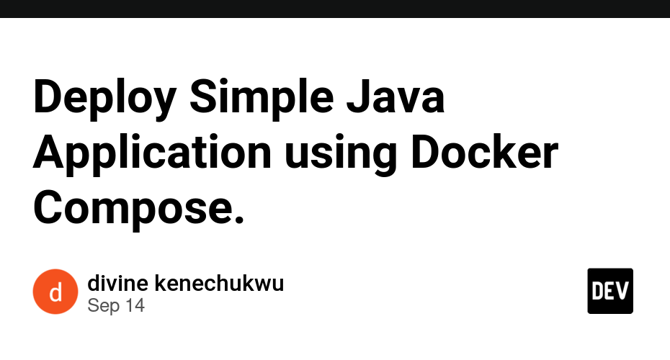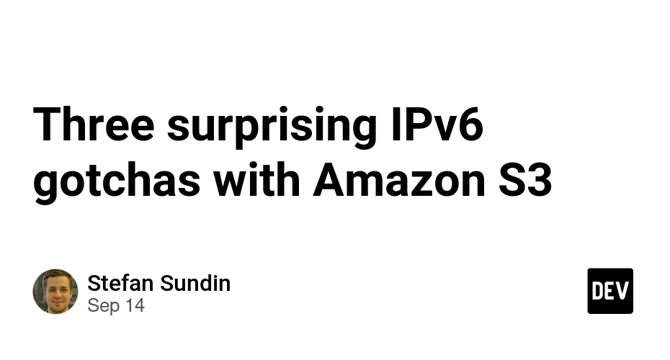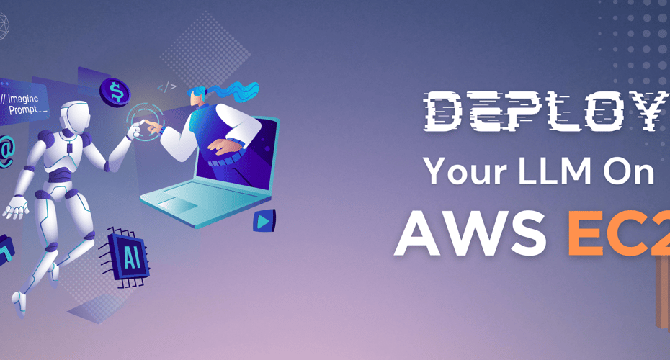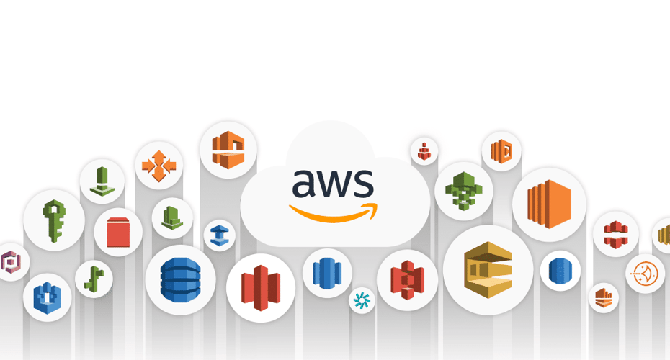Cloud News
Tech Radar
367

Image Credit: Tech Radar
We’re witnessing the death of the graphics card in real time right now, and I couldn’t be happier about it
- Integrated graphics are getting better, and dedicated graphic cards are slowly becoming obsolete.
- A new era of CPU and AI technologies complementing integrated graphics is causing the steady decline of graphics cards.
- Intel is planning to release Lunar Lake chips for powerful gaming performance.
- AMD has been enjoying huge success with its custom-tuned chips for PC gaming handhelds.
- Tools like Nvidia DLSS, AMD FSR, and Intel XeSS are making gaming on integrated graphics possible.
- The use of AI hardware is accelerating the death of the graphics card industry.
- AMD is planning to enter the AI market, leaving gaming cards for the budget to midrange space.
- The focus of the graphics card industry is shifting to AI projects incompatible with gaming PCs.
- Integrated graphics and iGPUs are improving at a faster rate than traditional graphics cards.
- CPUs that can handle everything you need for gaming at higher resolutions are on the horizon.
Read Full Article
22 Likes
Digitaltrends
243

Image Credit: Digitaltrends
Say Goodbye to Spam: Surfshark’s Alternative ID and Number Protect Your Privacy
- Surfshark VPN offers an Alternative ID service to protect your identity online.
- The Alternative ID generates fake contact information to mask your real identity.
- It helps prevent spam, online stalking, and unwanted calls or texts.
- Surfshark subscription with Alternative Number starts at $6 per month.
Read Full Article
14 Likes
Digitaltrends
363

Image Credit: Digitaltrends
Target dropped the price of this Lenovo ThinkPad from $875 to $500
- Target is selling the Lenovo ThinkPad L13 Yoga Gen 2 for $500, a $375 discount from its original price of $875.
- The Lenovo ThinkPad L13 Yoga Gen 2 is a highly recommended business laptop with Windows 11 Home, Intel Core i5, 16GB RAM, and 1TB storage.
- It features a 13.3-inch touchscreen, 360-degree hinge for versatile positions, up to 10 hours of battery life, and a lightweight design.
- The limited-time offer at Target provides a great opportunity to save on this excellent 2-in-1 laptop.
Read Full Article
21 Likes
Dev
22

Image Credit: Dev
Create a secure AWS RDS instance with CDK
- The post describes how to build a secure PostgreSQL RDS instance with AWS CDK. The AWS CDK constructs can create RDS instance, VPC, NAT gateway or instance, IAM roles, and others with a few lines of code. The post specifically discusses encryption at rest, how to log queries to CloudWatch, setting up a bastion host, and NLB. Performance Insights is also briefly mentioned as a tool to find bad queries that could be anomalous in nature and origin. Finally, the post suggests that while this guide is not comprehensive, it does provide an excellent framework for constructing secure infrastructure in AWS.
- Examples of creating secure infrastructure on AWS are discussed, starting with PostgreSQL on AWS RDS. AWS comprehensive services were explained, and all possible security features added based on ten years of AWS expertise. Several examples in the article were discussed, including networking, databases, security groups, and VPC endpoint configurations.
- The RDS instance was assumed to have secure credentials and encrypted storage at rest, with the root user password rotated daily. Additionally, the log queries are stored in CloudWatch, and Performance Insights can be enabled to detect bad queries. To achieve an additional layer of security, it is suggested to use more advanced security tools, like CloudTrail and S3 IAM roles.
- The article describes how an RDS instance with two modes of access (NLB and bastion host) was created. The bastion host functions as a tunnel so people can run queries. The NLB is configured to allow specific public IP addresses and connect to the RDS instance.
- The post explains how to use the Core Cloud Development Kit to create an RDS instance on AWS. A VPC with two public and two private subnets was also created, with flow logs sent to CloudWatch.
- The article explains how to set up the security group, which specifies who and how to access the RDS instance. In conclusion, the post provides an excellent guide to creating a secured RDS instance on AWS with CDK.
- In the post, the CloudWatch tool in AWS is used to monitor traffic in the VPC, making it possible to monitor and alarm the system when there are potential problems or security breaches.
- The article points out that AWS CDK constructs could create essential components for security, including RDS instances, VPCs, NAT devices, security groups, and IAM roles, among others. However, while the guide is not entirely comprehensive, it presents an excellent framework for handling secure infrastructure in AWS.
- The post shows the Core Cloud Development Kit (CDK) in action. The kit provides a way of defining cloud resources using familiar programming languages such as TypeScript, JavaScript, Python, Java, and .Net. Writing CDs using the CDK construct is straightforward since the number of configuration files required for defining AWS cloud resources is significantly reduced.
- The article explains in detail how to create a bastion host, which functions as a VPN gateway, allowing clients to connect securely to the RDS instance via a specified IP address.
- The post also suggests that Performance Insights, although it may not be strictly related to security, is useful in finding bad queries via this feature, which could be anomalous in nature and origin, and it makes these logs encrypted at rest.
Read Full Article
1 Like
Discover more
- Programming News
- Software News
- Web Design
- Devops News
- Open Source News
- Databases
- Product Management News
- Operating Systems News
- Agile Methodology News
- Computer Engineering
- Startup News
- Cryptocurrency News
- Technology News
- Blockchain News
- Data Science News
- AR News
- Apple News
- Cyber Security News
- Leadership News
- Gaming News
- Automobiles News
Dev
96

Image Credit: Dev
Avoid AWS Billing Surprises: Simplify Cloud FinOps
- A mini-project was initiated within the organization after experiencing an unexpected spike in AWS bill.
- Three ways to simplify Cloud FinOps: configure daily billing alerts, set up cost anomaly detection, and use Cost Explorer for root cause detection.
- Configure daily billing alerts by creating a CloudWatch billing alarm or an AWS cost budget.
- Utilize tools like cost anomaly detection and Cost Explorer to analyze cost patterns and identify potential cost-saving opportunities.
Read Full Article
5 Likes
Tech Radar
156

Image Credit: Tech Radar
Quordle today – hints and answers for Sunday, September 15 (game #965)
- Quordle is a challenging Wordle alternative game with its 965th round still ongoing.
- The five different standard vowels – A, E, I, O, U – are used in today's Quordle, out of which one answer contains repeated letters.
- None of the letters Q, Z, X, or J appear in today's Quordle answers, and no starting letter is shared.
- The four starting letters of today's Quordle answers are V, S, B and T.
- The answers for today's Quordle (game #965) are: VILLA, SMOKE, BULKY, THRUM.
- The hints and answers for Wordle, NYT Connections, and NYT Strands puzzles are also available on the site.
- Some of the past 20 answers of Quordle include ESSAY, GENRE, WIMPY, CHUTE, LEANT, ORGAN, FILLY, PLAIT, ROUGH, CACTI, SAVOY, ODDER, PLUMB, SEIZE, EARLY, ASSET, CHIRP, BEADY, THETA, MINUS, among others.
Read Full Article
9 Likes
Tech Radar
427

Image Credit: Tech Radar
NYT Strands today — hints, answers and spangram for Sunday, September 15 (game #196)
- Today's NYT Strands theme is… On the rocks
- Clue words to unlock in-game hints: WHISK, STET, WHEAT, CHEAT, SLED, FARE
- Hint for today's spangram: Mad Men tipple
- Sides of the board that today's spangram touches: First: left, 4th row; Last: left, 7th row
Read Full Article
25 Likes
Dev
441

Image Credit: Dev
Deploy Simple Java Application using Docker Compose.
- The goal of this project is to create Docker Compose Stack to deploy a simple Java application running in Containers 3-Tier Architecture.
- The pre-requisites for the project include setting up an AWS EC2 instance, installing Docker and Docker Compose, and Java source code.
- The steps involved in the project are setting up the environment, cloning the Java source code, writing Dockerfiles, and creating the Docker Compose file.
- Once the project is set up, it can be validated by checking if the containers are running and the application is accessible.
Read Full Article
26 Likes
Dev
96

Image Credit: Dev
Four surprising IPv6 gotchas with Amazon S3
- You can access Amazon S3 over IPv6 since 2016.
- VPC Gateway Endpoint prefix lists for S3 do not work with IPv6.
- Bucket policies restricting incoming traffic using the aws:SourceVpce condition are not compatible with the dualstack endpoint.
- S3 Express does not support IPv6.
- Static website hosting is not supported when accessing an S3 bucket over IPv6.
Read Full Article
5 Likes
Dev
326

Image Credit: Dev
Deploy Your LLM on AWS EC2
- In order to deploy your own Large Language Model(LLM) you need a lot of computing power. deploying it on AWS is a good alternative. AWS offers a flexible, cost-effective way to harness the power of LLMs without investing in expensive GPUs.
- Large Language Models (LLMs) require GPUs with varying capabilities for inference and fine-tuning. AWS instances like g4, g5, p3, and p4 are the latest generation of GPU-based instances that provide the highest performance for deep learning and high-performance computing (HPC).
- You can reduce the memory footprint by employing quantization techniques. For instance, quantizing the model to 4 bits reduces the GPU memory requirement to approximately 3.5 GB.
- To deploy an LLM application on AWS, you need to know which Instance Types to choose, which depend on the size and complexity of your Model parameters.
- A step-by-step guide for deploying your LLM-based application includes Creating an instance, Configuring your EC2 instance, Defining inbound rules for running a Streamlit application, Installing Python dependencies, Cloning repositories from GitHub, Creating a virtual environment, and finally, running the LLM application.
- streamlit runs applications on port 8501 which needs to be defined in inbound rules so that other systems can access your application.
- To ensure the installed libraries work properly without conflicts with system-wide Python packages, you need to install python3-venv, create a virtual environment, and install all the dependencies using the requirements.txt file.
- For running the application, run command "python3 -m streamlit run app.py" in the streamlit application repo's directory. To keep the application running even if you lose the terminal session, use the command "nohup python3 -m streamlit run app.py".
- By following this guide, you’re now equipped to deploy your own LLM-based application, making it accessible and scalable. This guide allows you to make your applications on the cloud efficient.
- This guide offers many references including https://aws.amazon.com/ec2/instance-types/,https://docs.aws.amazon.com/ec2/index.html, and https://docs.streamlit.io/.
Read Full Article
19 Likes
Dev
170

Image Credit: Dev
Most Commonly Used AWS Services
- Amazon EC2 (Elastic Compute Cloud) provides scalable virtual machines (instances) for any kind of workload. Amazon S3 (Simple Storage Service) is used for storing files, backups, and static content. RDS allows you to run managed relational databases such as MySQL, PostgreSQL, and SQL Server. Lambda is a serverless computing service for running code in response to events without provisioning or managing servers. VPC allows you to provision an isolated network within AWS, complete with subnets, route tables, and gateways. AWS Elastic Beanstalk simplifies the deployment of applications by automatically managing the underlying infrastructure.
- CloudFront is a CDN service used to distribute static and dynamic content globally with low latency. DynamoDB is a fully managed NoSQL database. Amazon SNS (Simple Notification Service) is used for sending notifications via SMS, email, or mobile push notifications. Amazon SQS (Simple Queue Service) is used to decouple and manage distributed systems by queuing messages between services. Amazon EKS (Elastic Kubernetes Service) is used for running Kubernetes workloads at scale.
- AWS CloudFormation provides infrastructure as code (IaC) capabilities by allowing you to define AWS resources in templates. Amazon Elastic File System (EFS) is used for scalable, shared file storage. AWS Glue is a fully managed ETL (Extract, Transform, Load) service for preparing and transforming data. Amazon Redshift is a data warehousing service for large-scale data analysis.
- AWS CodePipeline automates the build, test, and deploy phases of applications. Amazon CloudWatch monitors AWS resources and applications, collecting metrics, setting alarms, and sending notifications based on predefined thresholds. AWS Fargate is a serverless compute engine for containers. AWS WAF (Web Application Firewall) is used to protect web applications from common web exploits.
- AWS Kinesis is a real-time data streaming service. Amazon ElastiCache is used as in-memory caching for accelerating database or web application performance. Amazon Aurora is a MySQL and PostgreSQL-compatible relational database service.
- AWS Direct Connect is used to establish a dedicated network connection between on-premises data centers and AWS. AWS Systems Manager enables centralized management of AWS and on-premises resources. Amazon CloudTrail logs and monitors AWS API calls and user activity. Amazon ECS (Elastic Container Service) is an orchestration service for Docker containers.
Read Full Article
10 Likes
Dev
50

Image Credit: Dev
How to Provide Storage for a Public Website in Azure
- Azure offers a wide range of storage options from small personal blogs to large-scale enterprise applications and provides a clear explanation of the meaning of an Azure storage account and its uses.
- Key storage options provided by Azure comprise Azure Blob Storage ideal for storing unstructured data; Azure Files offer file shares that can be accessed by multiple applications and servers, making it suitable for shared data storage.
- A public website is accessible online to anyone without requiring a password or special permission. Examples of public websites include news websites, e-commerce websites, social media platforms, government websites, personal blogs, etc.
- The step-by-step guidance on how to provide storage for a public website in Azure are having a storage account with high availability to support websites, creating a blob storage container with anonymous read access, practicing uploading files and testing access, configuring soft delete, and configuring blob versioning.
- Creating a blob storage container for the public website content where customers can view images without authentication and configuring anonymous read access for the public container blobs.
- To test access and upload files, customers can select a file of their choice and upload it. For file deletion and restoring, usage soft-delete to restore the files and configure blob versioning for tracking the different website document.
- By carefully choosing the right Azure storage solution for your website and taking advantage of its scalability, reliability, and performance, you can ensure a smooth and efficient user experience.
- Azure offers different storage options as per website requirements, be it a small personal blog or large-scale enterprise website, like Azure Blob Storage, Azure Files, Azure Disk, and Azure Cosmos DB.
- Public websites examples include news websites, social media platforms, e-commerce websites, government websites, personal blogs, etc., which can be viewed without special permission.
- The five-step guidance on providing storage for public websites in Azure comprises creating a storage account for supporting websites, creating a blob storage container with anonymous read access for customers, practicing upload files, configuring soft-deletes and blob versioning.
Read Full Article
3 Likes
Dev
363

Image Credit: Dev
My journey into the cloud
- Amazon S3 (Simple Storage Service) is a versatile service for storing and retrieving data in the cloud.
- S3 CLI (Command Line Interface) makes managing S3 buckets faster and more efficient than using the console.
- Integrating S3 with Lambda allows for automation of tasks like image processing and file validation.
- Next week, the author plans to dive deeper into Lambda and build an image-sharing app.
Read Full Article
21 Likes
Tech Radar
105

Image Credit: Tech Radar
AI could actually change movies for the better – and fix that awful Game of Thrones finale
- The recent AI Film Festival showcased films created using AI technologies.
- The winning film, 'To Dear Me', explored self-discovery and healing.
- AI is seen as a tool that will augment, not replace, traditional movie making.
- AI has the potential to revolutionize the industry with on-the-fly movie making and personalized viewer experiences.
Read Full Article
6 Likes
Cloudwards
179

Image Credit: Cloudwards
What Is Decision Tree Analysis? Steps and Examples in 2024
- Decision tree analysis is the process of creating visual documents that outline the potential outcomes of decisions.
- There are four types of decision trees: the Current Reality Tree, the Evaporating Cloud Tree, the Future Reality Tree, and the Strategy and Tactics Tree.
- Decision trees can help project managers navigate challenges by identifying root causes, finding timely solutions and protecting project budgets.
- While decision trees are typically used in traditional project management methodologies like Critical Chain Project Management, they can also work alongside any methodology or Agile framework.
- Decision trees can help resolve issues relating to product quality, constraints, project finances, operations and more.
- The five steps in decision tree analysis are starting with an idea, adding decision tree nodes, reaching the endpoint, calculating expected values and evaluating the outcome.
- Project leaders use decision trees to visualize complex problems that occur during the end-to-end project management cycle.
- Decision trees offer many advantages that can improve your approach to solving problems.
- Decision trees are easy to make and maintain, and they can be shared with others quickly.
- Decision trees can help you manage project finances, find the root cause of an issue and figure out logical steps to fix the problem.
Read Full Article
10 Likes
For uninterrupted reading, download the app